It is almost summertime, the weather is (finally) getting warmer and Umbra staff is preparing for the arrival of summer students. We cannot wait for you to be here and explore our beautiful city of Perugia but we know that traveling will be an important part of your stay. If you’re already doing a bit of research and planning, we would like to give you a few suggestions for places to visit in our region! They include medieval hill towns, a surprising national park in the Apennine mountains, a lake with incredible sunsets, and the tallest waterfalls in Italy. So without further ado, here are some gems for your day trip destinations:
Spoiler alert: Assisi and Orvieto are not on the list. Their beauty is famous well beyond Italian borders.
Le Cascate delle Marmore (Marmore Waterfalls)
In need of a refreshing day? Then, Marmore is the right destination! Offering a range of activities including hiking, rafting, and river walking, this man-made waterfall is the perfect way to take a break from the city.
Originally created by the Romans (271 BCE) to redirect the influx of water to other rivers, and later modified by Aristotle Fioravanti (1422) and others, this three-tiered waterfall still impacts water influx to this day. This journey through Italian architectural ingenuity has inspired countless artists and continues to do so. The surrounding area provides a range of ‘mercatini’ (markets) selling paintings, frames, and more local art to enjoy. Just don’t forget to check the opening times before you go so that you know you’ll get to experience the full majesty of the thundering falls.
From Perugia: take a 1 to 1-hour and 30-minute train to Terni then hop on a 20-minute bus from Terni to the Cascate. Total cost: around 9 EUR
Entry fee: 12 EUR
Link: Cascate delle Marmore Website
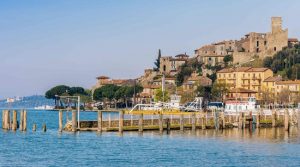 Lake Trasimeno
Lake Trasimeno
Hop on a train to Passignano and… rent a bike here or in any other bike store! The Trasimeno bike path unfolds along the lake perimeter. You will pass through typical villages like Torricella, San Feliciano (famous for its sunsets), and Tuoro, where you can take the ferry to Isola Maggiore. Castiglione del Lago is another great town by the lake, full of history and great restaurants. You can easily get there by train.
From Perugia to Passignano by train: 30 minutes by train. Cost: 5 EUR
General Information: Lago Trasimeno Website
Gubbio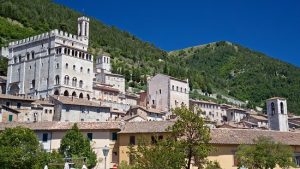
Gubbio is one of the most ancient towns in Umbria, remaining marvelously well-preserved over the centuries, with many monuments that bear witness to its glorious past. Construction began in the early 14th century on the superb complex that includes the Palazzo dei Consoli, a symbol of the town and home of the Picture Gallery and Archeological Museum. Do not miss the Eugubine Tablets (seven bronze tablets written in Umbrian language) at the Civic Museum in Palazzo dei Consoli.
From the Perugia bus terminal in Piazza Partigiani, take the bus E001 to Gubbio: 1 hour and 15 minutes; Cost: 6,50 EUR
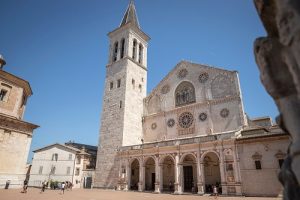
Spoleto
Just an hour’s train ride from Perugia you’ll find Spoleto, a beautiful town complete with a functioning Roman Aqueduct/bridge, intact Roman theatres, cathedrals, local markets with artisan products, and an abundance of historical museums showcasing the rich culture and heritage. The most prominent event is the ‘Festival dei 2Mondi’ (Festival of 2Worlds) founded by the Italo-American composer Gian Carlo Menotti in 1958. This festival takes place during the last week of June and the first week of July and attendees can browse through exhibitions involving art, dance, music, theatre, and more.
Spoleto’s alluring nature and historical importance have made it the protagonist of numerous films and will undoubtedly leave an impression on every visitor.
From Perugia by direct train: 1 hour. The regional train ticket costs 6,80 EUR.
Monti Sibillini National Park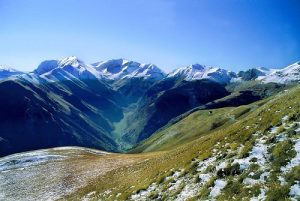
This National Park is really off the beaten track for international tourists! Tucked away within the Apennine Mountains, Monti Sibillini National Park is a wild and wonderful destination in Umbria. Dotted with medieval villages, lakes, and legends, it’s a popular destination for outdoor adventures, such as hiking, biking, rafting, and canyoneering. Wildflowers and wildlife are abundant in the park, from orchids to wolves and birds of prey.
Norcia is the main town in the area, and although it was damaged during the 2016 earthquake, it still preserves its medieval charm. Norcia is also famous for its cuisine, hams, and cheeses, and you will find plenty of affordable shops and trattorie. However, if you decide to invest some more money in a unique food experience, bear in mind that Norcia is home to one of the three Michelin-starred restaurants in Umbria, the Vespasia.
It is not very easy to get to Norcia from Perugia. That is why you might opt for a weekend trip. However, a direct bus connects Spoleto with Norcia in less than an hour at a very low fare.
General information: Monti Sibillini National Park website
If you are looking for more destinations, please refer to our QR handout guides on the second floor once you’re here! Safe travels!


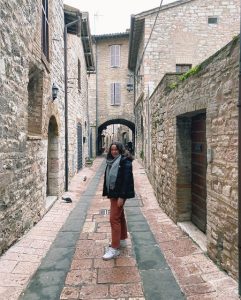
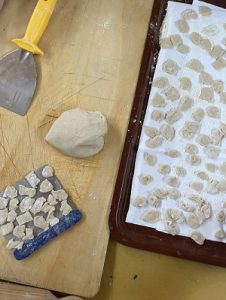 With my outgoing nature, I quickly became acquainted with the people in my program. We went out for an aperitivo, invited each other over for homemade dinners, make-your-own pizza nights, and went out on the town. All of the friends who I met and stayed around were like-minded and also made the decision to come alone to Perugia.
With my outgoing nature, I quickly became acquainted with the people in my program. We went out for an aperitivo, invited each other over for homemade dinners, make-your-own pizza nights, and went out on the town. All of the friends who I met and stayed around were like-minded and also made the decision to come alone to Perugia.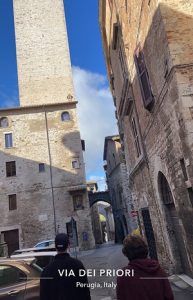 Pictured on the left are two of my roommates walking down the street we live on, Via Dei Priori, on the day we moved in. As you can see, the streets are incredibly narrow compared to American streets – especially when cars drive up and down the street! Whenever a car comes, all the pedestrians huddle on one side to allow the car to pass through. While this was unexpected at first, it is a practice we quickly got used to as we walk streets like this every day. On the left side of the image, there is a large tower: this is Torre degli Sciri, a 13th-century medieval structure, and our next-door neighbor! The tower is now open to visitors for free on the weekends (though tips are appreciated). As my roommates and I explored the city during our first days in Perugia, we decided to climb the tower to check out the view of our new home. The views we were met with were nothing short of breathtaking:
Pictured on the left are two of my roommates walking down the street we live on, Via Dei Priori, on the day we moved in. As you can see, the streets are incredibly narrow compared to American streets – especially when cars drive up and down the street! Whenever a car comes, all the pedestrians huddle on one side to allow the car to pass through. While this was unexpected at first, it is a practice we quickly got used to as we walk streets like this every day. On the left side of the image, there is a large tower: this is Torre degli Sciri, a 13th-century medieval structure, and our next-door neighbor! The tower is now open to visitors for free on the weekends (though tips are appreciated). As my roommates and I explored the city during our first days in Perugia, we decided to climb the tower to check out the view of our new home. The views we were met with were nothing short of breathtaking: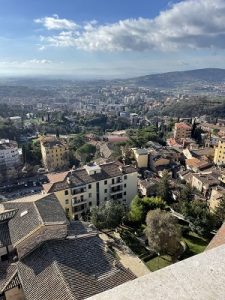 Pictured on the right, the entire city of Perugia can be seen – and beyond! The flat valleys behind the city contrast with the stark mountains in the back that crest above the clouds. Rays of sun shower down from above and illuminate the entire town, allowing the vibrant colors of the houses below to really pop. Additionally, you can see the emphasis on nature I was mentioning above; there are so many trees and green spaces all throughout the city! I wish more American cities followed this European style of city planning and featured more green spaces because they really bring a lot of character to the city of Perugia.
Pictured on the right, the entire city of Perugia can be seen – and beyond! The flat valleys behind the city contrast with the stark mountains in the back that crest above the clouds. Rays of sun shower down from above and illuminate the entire town, allowing the vibrant colors of the houses below to really pop. Additionally, you can see the emphasis on nature I was mentioning above; there are so many trees and green spaces all throughout the city! I wish more American cities followed this European style of city planning and featured more green spaces because they really bring a lot of character to the city of Perugia.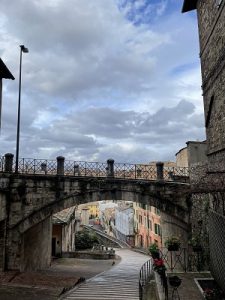
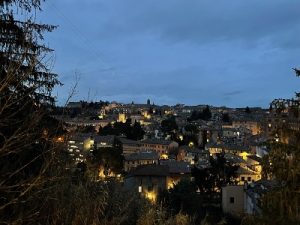 Learning about ancient Rome, the Renaissance, and food culture while in Italy allows me to have a better appreciation for the city I live in, such as when observing art, walking through ancient streets, or eating at local restaurants. So far, my first impressions of Perugia and the Umbra institute have been resoundingly positive. I have had such a great time so far, and I can’t wait for everything that comes next in my Italian study abroad experience!
Learning about ancient Rome, the Renaissance, and food culture while in Italy allows me to have a better appreciation for the city I live in, such as when observing art, walking through ancient streets, or eating at local restaurants. So far, my first impressions of Perugia and the Umbra institute have been resoundingly positive. I have had such a great time so far, and I can’t wait for everything that comes next in my Italian study abroad experience!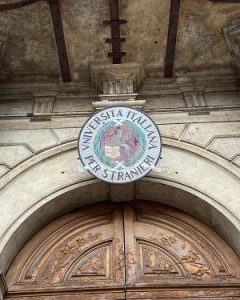 Of course, I had my academic highs and lows throughout the semester, but one thing I cannot stress enough was that I was never alone. Lucky for me, as a Direct Enrollment student, I have the privilege to belong to two communities. One at L’Università per Stranieri, and another at The Umbra Institute. Even though I treasure the former, the latter is what truly made an impact on me. There is something truly magical that resides in the essence of the people who inhabit all of the offices of the Umbra Institute. Never have I ever seen such a community of people that are not only passionate about what they do but so effortlessly compassionate in their efforts. It is quite remarkable.
Of course, I had my academic highs and lows throughout the semester, but one thing I cannot stress enough was that I was never alone. Lucky for me, as a Direct Enrollment student, I have the privilege to belong to two communities. One at L’Università per Stranieri, and another at The Umbra Institute. Even though I treasure the former, the latter is what truly made an impact on me. There is something truly magical that resides in the essence of the people who inhabit all of the offices of the Umbra Institute. Never have I ever seen such a community of people that are not only passionate about what they do but so effortlessly compassionate in their efforts. It is quite remarkable.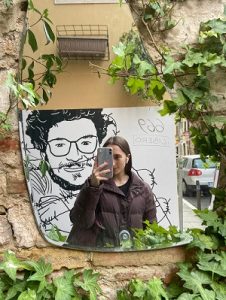 As I reflect on my experience during my first semester, I realized that I have never laughed so much, learned so much, and lived so much in a semester of university. Therefore, as I sit back here in these hallways once again ready for another exhilarating semester, I remind myself that I am here for a younger Victoria who always dreamed of being bilingual. I am here for the present version of myself who found a passion in language acquisition. And lastly, I am here to prove to my future self that I can excel at whatever I put my mind to.
As I reflect on my experience during my first semester, I realized that I have never laughed so much, learned so much, and lived so much in a semester of university. Therefore, as I sit back here in these hallways once again ready for another exhilarating semester, I remind myself that I am here for a younger Victoria who always dreamed of being bilingual. I am here for the present version of myself who found a passion in language acquisition. And lastly, I am here to prove to my future self that I can excel at whatever I put my mind to.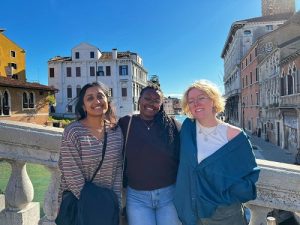

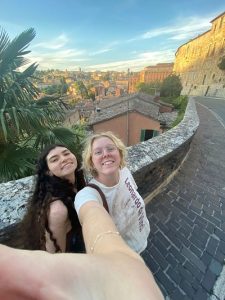
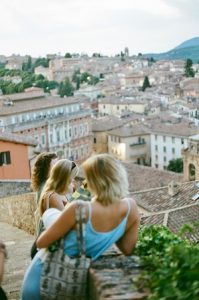
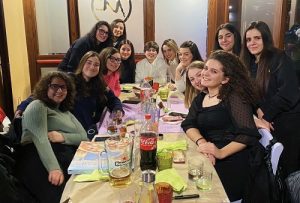
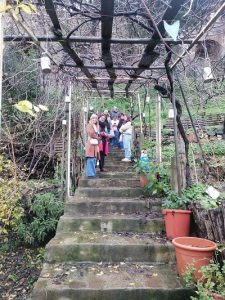 In September 2021, the Umbra Institute assumed management of Orto Sole to revitalize the garden and develop it as a living laboratory for the Institute’s Food, Sustainability and Environment program. The Institute will use the green urban hillside as its “outdoor classroom”: continuing the garden’s use as a didactic space, exploring new agricultural technologies, and sponsoring community-engaged learning projects with local partners.
In September 2021, the Umbra Institute assumed management of Orto Sole to revitalize the garden and develop it as a living laboratory for the Institute’s Food, Sustainability and Environment program. The Institute will use the green urban hillside as its “outdoor classroom”: continuing the garden’s use as a didactic space, exploring new agricultural technologies, and sponsoring community-engaged learning projects with local partners.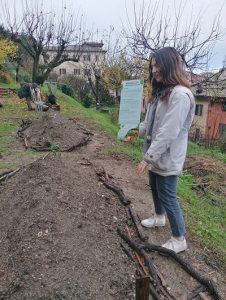 Some of their projects for example involved the creation of Hugekultur, layered mounds of decaying wood debris and other compostable biomass and plant materials, left to break down in time into a nutrient-rich raised bed. Another project of agricultural value was surely the Worm Towers, structures where worms will gather and consume the organic compost inside, and will then spread in the garden and fertilize the soil.
Some of their projects for example involved the creation of Hugekultur, layered mounds of decaying wood debris and other compostable biomass and plant materials, left to break down in time into a nutrient-rich raised bed. Another project of agricultural value was surely the Worm Towers, structures where worms will gather and consume the organic compost inside, and will then spread in the garden and fertilize the soil.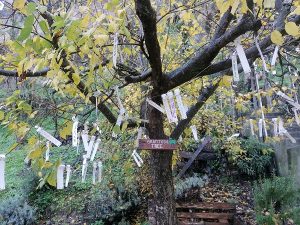
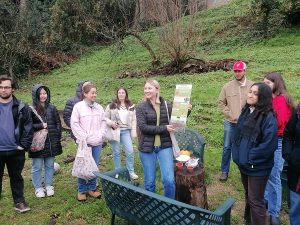 Needless to say, we are proud of the work that has been put into the Orto, and both as Umbra body and as part of the bigger Perugian community, we hope more will continue to be done in the future!
Needless to say, we are proud of the work that has been put into the Orto, and both as Umbra body and as part of the bigger Perugian community, we hope more will continue to be done in the future!